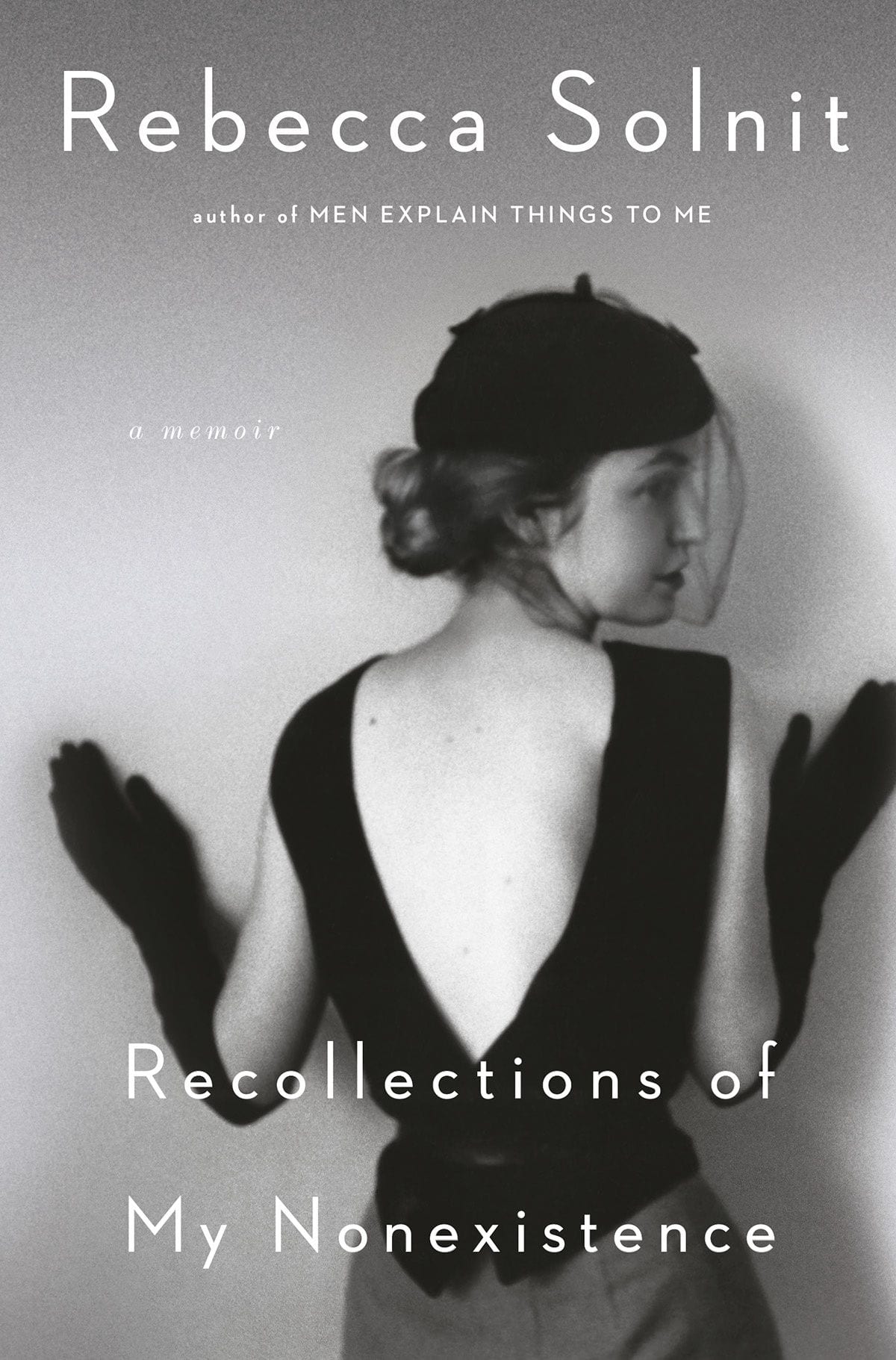
The acknowledgements page of Rebecca Solnit‘s new memoir, Recollections of My Nonexistence, opens with this reflection: “I’m here because of the forces that protect the vulnerable, encourage the eccentric, and educate the ignorant” (241). For a long time now, readers have counted Solnit as one of those very same forces that save.
Most people know her best as author of the 2008 viral Granta essay and subsequent 2014 book of same title, Men Explain Things to Me (Granta, 2014). To state it minimally, Solnit is a widely respected feminist. To state it maximally in the manner of the anonymously hateful message boards that still wish her dead, Solnit’s powerful threat to the patriarchy continues to exponentially expand.
Too many people have quit noticing Solnit’s work, primarily because vast swaths of her literary career have been given over to ideas about landscape. She has published several books on the American West, a handful of city guides—most notably about her longtime hometown of San Francisco—and a few other books that more generally theorize walking or wandering across different spaces.
The majority of these landscape books have won major awards, if you’re into that, but more importantly: each tells a feminist story, excavates the tales of people who are discounted and erased in American history, and proffers a space for these voices to scream out about and point at the many kinds of violence against them. I confess that I didn’t read any of those landscape books—and also that I just sheepishly, belatedly added a couple of them to my “must read” list based on how they resurfaced in Recollections of My Nonexistence.
This memoir begins with teenage Solnit’s arrival in Frisco and works its way across three decades toward the explosive publication of her essay that launched the concept we now call “mansplaining”. Each of Solnit’s book projects over this span of 30 years surfaces in its own way, fully integrated into what her life was like at the time and what lessons her experiences taught her in retrospect.
The deeper one gets into the text, the more obvious it becomes: Solnit’s interest in freedom of movement and with the American West are just as much born out of her feminism as her couple of books that are marketed explicitly as being about feminism. To skip the middle of her oeuvre is a mistake, because her entire body of work really is of a piece with the thing for which she is most beloved.
The other mistake I made was in expecting this memoir to be kind of angry. That’s with no shade to feminism, of course. It’s just that the title alone posits how the author used to feel erased, so presumably the book would fork over some names of the guilty, but there’s very little gory gossip in here. Instead, Solnit has gracefully aged out of any mere fist-shaking into a voice predicated more on holding direct eye contact with the guilty. That’s the beauty of her arrival at a position of much greater power and influence.
Her lifelong consideration of landscape is evident in the way her sentences stretch out, most of them filled out with several commas plus a tendency to rev along on the energy of “and…and…and.” She doesn’t simply give an example; she reworks it three or four times within the course of a single sentence, expansively and specifically homing in on a given thread. Random example pulled from page 58, in honor of the author’s current age:
I became expert at fading and slipping and sneaking away, backing off, squirming out of tight situations, dodging unwanted hugs and kisses and hands, at gradually disengaging, or suddenly absenting myself. At the art of nonexistence, since existence was so perilous.
A lesser writer would just tell us what happened, give us the details of one of these instances. Perhaps one of the secrets of Solnit’s widespread appeal is precisely that she doesn’t bother to tell us the bare facts of her life. Her facts will not be my facts or your facts; our struggles are same same, but different. Solnit’s ability to capture the pathos of girlhood, to articulate the emotional landscape that women construct in order to survive and then possibly to thrive, keeps the focus where it belongs: on what we really do have in common.
Her feminism stretches with ease toward a classic kind of humanism—except humanism doesn’t cover her concern for animals and the environment in its totality. The acknowledgements page concludes with a nod to the real objective: “Here’s to the liberation of all beings.”
Because despite all the death threats, Solnit’s an optimist. She had some kind of rough life as a youngster, yet she is still standing, taller and stronger now more than ever. She continues to survive the gamut of violence faced by all women—the sexual and professional harassment, the unintentional or ignorant undermining, the random menaces made in alleys of the internet or the streets, and the rest of the litany many of us know so well. Yet, she still exists!
The fact that Solnit still exists is all the proof we need that her way of thinking often works. Recollections of My Nonexistence does a terrific job of sharing her insight into how the struggle gets done, and anyone interested in the obliteration of patriarchy would do well to get acquainted with who Solnit is now. The surprising amount of peace of mind this book induces is, if I am not mistaken, a delicious and hard-earned symptom of hope.

